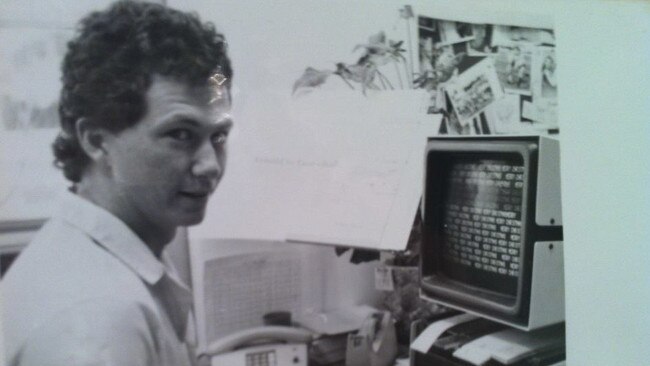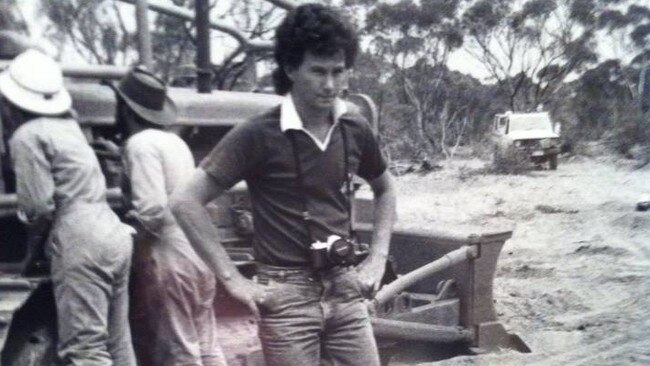
The aptly named editor, Peter Read, greeted me in bermuda shorts and open-necked shirt, and my neat-casual colleagues seemed more stand-offish than I expected in a country town.
Weeks later, when we had broken the ice, my new workmates explained they had interpreted my jacket and tie as a sign of city arrogance.
Lessons numbers one and two in journalism — everyone has their own perspective and judging the motives of others is fraught. Within a week or two I had a corrective the other way, with the managing director making it known that shorts and sandals took the casual look too far.
My paper was The Murray Pioneer based in Renmark, a town of close to 10,000 people nestled around a broad sweep of the Murray River in South Australia. The paper served the broader Riverland area with four main towns and a population of about 40,000.
It has been in the hands of the local Taylor family for more than a century; a local institution. As a reporter you were immersed in the local issues, learning about irrigation, citrus export barriers, vineyard blights, water rights, tourism campaigns, broadacre farming trends and transport needs.
You engaged face to face with both the people you reported on, and the readers. You might write a story about someone during the week and line up against them in footy on Saturday afternoon.
Once I turned up at my local deli to see my front-page article about petrol discounting displayed in the shopfront, complete with scrawled criticisms denouncing it as a work of fiction. The shopkeeper served me, while filling me in on my errors.
Every day was an adventure: on the river flats getting snaps of tinnies jumping from one billabong to another, over a dirt track, for the annual Dinghy Derby; scamming my first ride in a helicopter to get pictures of a bushfire; meeting Australian cricketers on tour; and a free trip to Adelaide to review a play heading to the Riverland.

The first time I interviewed then South Australian Labor premier John Bannon, I was in awe of him during a nerve-racking, one-on-one for The Pioneer. Less than a decade later, we would lock horns over the State Bank fiasco when I was an Adelaide television reporter and he accused me of having a vendetta against him.
A grape glut, orange growers facing imported concentrate or farmers battling drought, you could not fail to learn about the real-life commercial pressures in a range of industries. The river was the lifeblood; we skied on it, fished in it, swam in it and relied on it for orchards, vineyards and tourism — salt mitigation, water rights, conservation and water allocations were constant interests.
People welcomed you into their homes to share their stories: third-generation Lutheran families preaching on the radio; artist communes battling government interference; post-war migrants celebrating Greek festivals; and newer arrivals from South Asia and China finding their way. A vital indigenous community was based at Gerard.
It is impossible to overstate the importance of local papers as newsletters for sport, senior citizens activities, amateur theatre and charitable groups. I once wrote an opinion piece declaring the numbered avenues of Renmark were boring and should be renamed in honour of prime ministers. A reader wrote to explain the system was a historical link to the Chaffey brothers, the Canadian (via California) irrigation experts who laid out Mildura and Renmark using North American street numbering practices.
Regional newspapers are more important than the pubs and sporting clubs, more important than the shops, museums and tourist sites, and almost more important than each local industry, because they help to draw all those elements together as a community, nurturing its traditions and lobbying for its interests. They are under enormous commercial pressure around the nation; many are closing or going to digital only, and independents are hanging on by their ink-stained fingernails.
Do what you can to support them. Subscribe. Advertise.
The Pioneer is still going — although smaller offshoot papers in Loxton and Waikerie have been closed — and it is only published once a week now, with an online version available too. I hope the digital demands don’t stop them doing what we used to do, and head down to Plushs Bend for a barbie and a drink after putting an issue to bed — that is where we would tell the stories we could never publish.




My first full-time job in journalism was at a country newspaper. On my first day I was nervous and keen to make the right impression, so dressed smartly in trousers, shirt, tie and a sports jacket bought for the new career.